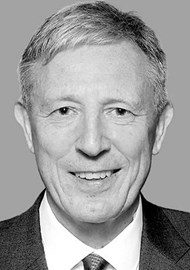I left the last blog with the statement that Zoey had been unlawfully killed. That is a pretty bold statement to make when the legal verdict is death by misadventure. But that was not a verdict based on validated evidence. There was a cynical deception perpetrated by the legal defence team. Again, another pretty bold statement to make and one which I would be foolish to make if I did not have the evidence to support the claim. Evidence in black and white. I have to poor scorn on the legal ‘balance of probabilities’ type of evidence. There are so many ways to rig such an assessment. And this becomes even more so when the presentation of evidence is done in an adversarial context. I am quietly pleased that the local English language newspaper, the South China Morning Post, did publish my letter about the need to reform the Medico-legal practice in Hong Kong. http://www.scmp.com/comment/letters/article/1976866/mechanisms-dealing-medical-blunders-hong-kong-have-failed
So moving on; an unlawful killing. Who is responsible? Well we have to consider how and why did she die? Lignocaine toxicity is not lethal if correctly managed. The resuscitation of Zoey was shambolic. That is what killed her, or killed her brain. Four doctors were involved but they can in no way be regarded as equally culpable. Dr Wong was the person who created the disaster. But how and why was he allowed to do so? He was a specialist in obstetrics and gynaecology who also performed some cosmetic surgery. It could be said that he effectively gambled on the lives of patients when he made the conscious choice on how to equip his clinic and what type of procedures he would undertake there. More significant was that he chose to be both surgeon and anaesthetist, albeit using conscious sedation.
He used a very powerful intravenous sedative narcotic and in the data sheet for Pethidine BP injection issued by AstraZeneca they state quite clearly that, “Pethidine should not be administered by intravenous injection unless resuscitative equipment and narcotic antagonists are readily available.”
Francis Ho did record that Naloxone was available in Dr Wong’s clinic. He also mentioned that Dormicon was also available. There are indeed many troubling aspects about Dr Francis Ho’s expert opinion, which lead one to question how much of it was ‘directed’. The reports should be independent and for the benefit of the court. Francis failed to mention on a number of occasions that this was NOT a simple local anaesthetic procedure; it was an operation performed under ‘conscious sedation’ using a powerful intravenous agent. I have to take Francis to task for this as he would have to justify his statements under oath if this inquest is, as it has to be, re-opened. Which statements?
Conclusion.
Para 4: “It is not mandatory for a patient to be weighed prior to undergoing breast augmentation surgery under local anesthesia as the drug dosage needed to finish the operation in comfort is usually well within the safety margin. However it would always be helpful if this weight information is available.”
Para 7: “Simple augmentation mammoplasty that was performed on this patient can be effectively done under a safe dose of local anesthetic in an office set up without the present (sic) of an anesthetist.”
Para 11: “...Dr Wong’s clinic should be considered adequately equipped with the instruments and appropriate resuscitation medications to perform simple office surgery including simple breast augmentation.”
Para 12: “Dr Wong’s clinic did not have laryngeal mask, ETT nor intubation equipment…in exceptional incident, Dr Wong should be able to have quick easy access to these instruments and devices through nearby facilities or ambulance services.”
Para 13: “Largugeal (sic) mask airway is not part of the basic resuscitation equipment set up in a doctors clinic.”
Para 14: “Dr Wong did not house a defibrillator in his clinic but in case of emergency he should be able to have quick access to this equipment in the nearby facility preferably in the same building.”
Para 15: “Administering Dormicon is the clinical decision for the doctor to make depending on circumstances. The benefit is that it can treat convulsions. The risk is that it can cause further respiratory depression.”
Para 17: “There was seemingly no delay in contacting the ambulance services and transferring the patient to Hospital.”
And perhaps a final statement of perfidy:
Para 18: “Had the LMA been made available through ambulance service, the patient might have been able to get over the toxicity.”
A shameful report and one on which the coroner eventually based his verdict of misadventure two years later. But I cannot believe that Francis would have created such a report independently. Herein lies one of the great fallacies and weaknesses of the adversarial system where winning is more important to the legal team than examining the evidence in an unbiased manner (to be continued).




